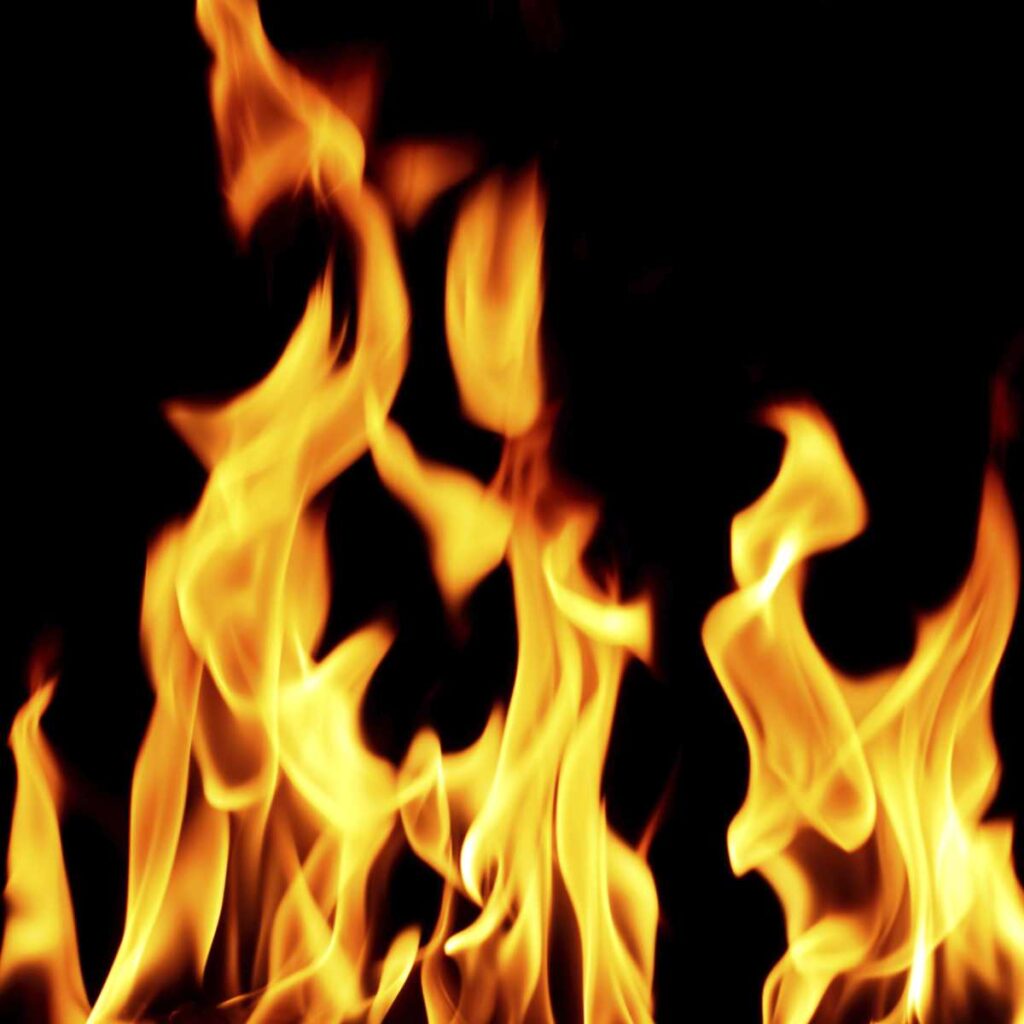Last Reviewed and Updated on August 6, 2022
Once considered one of the four elements, fire has been a part of human life since the very beginning. Read some facts about fire that you might not have known before.

1. Fire is a chemical reaction
Fire is a chemical reaction that gives off heat and light. It is a process of combustion, a rapid chemical reaction between a fuel and an oxidant.
2. Flames come in many colors
You most commonly see flames in yellow, orange, or red colors, but flames can be almost any color. The color depends on the type of fuel and the temperature. Burning copper, for example, will produce green-blue flames.
3. Flames can cast shadows, but you usually don’t see them
You don’t see a shadow of a flame because flames are a source of light. But if you introduce another, brighter source of light next to it, a flame will cast a shadow. The shadow will be weak, though.
4. Flame is the visible part of the fire
Flame is the visible, gaseous part of the fire. Fire is the state of burning; the flame is the result of the state of burning.
5. Spontaneous combustion is a thing
Most things won’t start burning spontaneously without an external heat source/fire source to light them on fire. But this isn’t always the case. Hay piles and compost piles are known to self-ignite because of heat produced by bacterial fermentation. A few other materials have been known to burn spontaneously as well.
6. Fire plays a significant role in many religions
From ancient to modern religions, fire plays an integral part in many.
7. Control of fire was one of the most important milestones in human history
One of the most important events in early human history was the control of fire. Fire provided humans with warmth, lighting, protection, and the ability to cook food and make better tools for hunting. It made life a lot easier and made a huge impact on human evolution.
8. Fire burns at different temperatures
From just as little as 500°C-600° for log fire flames to almost 2000° in propane gas burners.
The temperatures of flames vary depending on the fuel source, and even then, the temperature of the flame itself fluctuates greatly from one portion (center) to the other (edges).
9. Earth is the only planet in our Solar System where fire can burn
You need fuel, and you need a decent amount of oxygen to sustain burning, and Earth is the only planet in our Solar System with enough oxygen in the atmosphere for fire to burn.
10. If you light a candle in a space station, the flame will be a dome-shaped
This is one of the most fun facts about fire; it burns differently in space. On Earth, a candle flame is pointy, while a candle lit in microgravity (space-station) will have a sphere-shaped flame (source).
